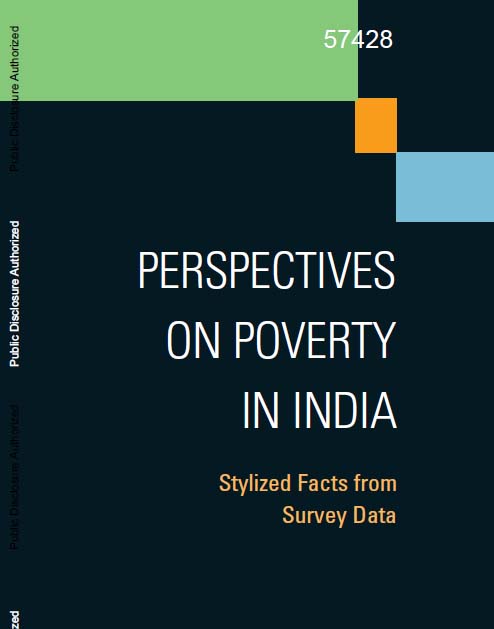/topics/food-and-nutrition
Food and Nutrition
Toilet manure in organic farming – An article by Varanashi Research Foundation
Posted on 12 Aug, 2011 03:45 PM Human faeces and urine (toilet manure) are a serious waste disposal problem especially in areas with high human population density. At the same time they are rich in nutrients that are essential to plants.
Human faeces and urine (toilet manure) are a serious waste disposal problem especially in areas with high human population density. At the same time they are rich in nutrients that are essential to plants.
Rainfed agriculture - Meeting the challenges of food security in India – A paper in Current Science
Posted on 08 Aug, 2011 06:40 PMThe paper notes that there are large opportunities for gains from adaptation and new investments in water management for meeting the targets under the proposed National Food Security Act.
Climate change hits food production
Posted on 28 Jul, 2011 03:10 PMArticle and Image courtesy: Down To Earth
Author: Indu Mathi S
Global warming has resulted in 20 per cent increase in price of wheat, maize, rice and soybean.
 Estimated impact of climate change on crop production during 1980-2008. Negative values indicate climate change reduced yields
Estimated impact of climate change on crop production during 1980-2008. Negative values indicate climate change reduced yields
There have been many indicators that global warming could be hurting the world food production, lowering yields and increasing prices. Turns out the warming of the planet over the past three decades has already led to a measurable reduction in crop production of wheat and maize.
Perspectives on poverty in India - Stylized facts from survey data – A report by World Bank
Posted on 26 Jul, 2011 04:38 PM It produces a diagnosis of the broad nature of the poverty problem and its trends in India, focusing on both consumption poverty and human development outcomes.
It produces a diagnosis of the broad nature of the poverty problem and its trends in India, focusing on both consumption poverty and human development outcomes.
It also includes attention in greater depth to three pathways important to inclusive growth and poverty reduction harnessing the potential of urban growth to stimulate rural-based poverty reduction, rural diversification away from agriculture, and tackling social exclusion.
Public support to food security in India, Brazil and South Africa – Elements for a policy dialogue – A working paper by International Policy Centre for Inclusive Growth
Posted on 21 Jul, 2011 08:52 AM Together, India, Brazil and South Africa have about 20 per cent of the world’s population. Although the three countries have demonstrated the potential for transformative development in the South, their experience has been marked by key challenges such as relatively high levels of poverty, inequality and food insecurity, problems that persist for significant numbers of people.
Together, India, Brazil and South Africa have about 20 per cent of the world’s population. Although the three countries have demonstrated the potential for transformative development in the South, their experience has been marked by key challenges such as relatively high levels of poverty, inequality and food insecurity, problems that persist for significant numbers of people.
There is a potential to build a network of academics and experts from Brazil, India and South Africa, and food security is among the themes of great interest. This paper seeks to contribute to this process by examining pertinent elements of policy dialogue. As regards food security, each of these countries has developed conceptions and orientations that guide their policy agendas. They include distinctive treatments of several multi-dimensional strategies, multi-stakeholder arrangements and rights-based approaches.
Why India's 'growth' focus is ignoring the food access question - Article from Infochange India
Posted on 14 Jul, 2011 11:41 AMArticle and Image courtesy: Infochange India
Author: Rahul Goswami
Celebrating the fact that per capita agricultural income is increasing faster than overall per capita income, the government is targeting 4% growth in agriculture in the Twelfth Plan period. But this is a rosy view that does not stand up to scrutiny.

Draft National Food Security Bill approved by the National Advisory Council
Posted on 09 Jul, 2011 04:11 PM
The issues related to the Draft National Food Security Bill approved by the National Advisory Council (NAC) were taken up for discussion by the Empowered Group of Ministers (EGoM) in their meeting on 11th July, 2011 which approved it. The Bill has to be now ratified by the parliament where it is proposed to be introduced in December 2011 to become law. It would need about 61 million tonnes of grains a year, the bulk of which would be wheat and rice.
The EGoM tried to settle the differences between the views of the NAC and the Food Ministry on the contours of the legislation such as on coverage under the Bill, method to be adopted to ensure food security, amount of food grain required and the implication of the Act on the food subsidy ‘burden’. While the NAC had preferred legal entitlement to subsidised foodgrain for 90 per cent of rural population and 50 per cent of urban population, the Food Ministry was interested in lowering of the legal coverage for rural families. The Bill is now with the Law Ministry.
Why India is losing its war on hunger – A case study by Oxfam
Posted on 29 Jun, 2011 08:50 AM The paper argues that the country needs urgent action to protect the universal right to food, prioritize land reforms, and sustainably revive agrarian productivity.
The paper argues that the country needs urgent action to protect the universal right to food, prioritize land reforms, and sustainably revive agrarian productivity.
India is home to a quarter of the world’s hungry people. Since the green revolution, the country has produced enough to feed itself, but it has not yet been able to wipe out mass hunger, which haunts the landscape of the countryside and lurks in the narrow alleys of urban slums.
Currently, 40 per cent of the population is malnourished – a decrease of only 10 per cent over the past three decades. Poor families, who spend more than 60 per cent of their incomes on food, are increasingly struggling to stretch their meagre household budgets. Unfortunately, small farmers have not benefited from high retail prices either, as they usually receive far less for their produce. In fact in the past 15 years, in an unprecedented wave, a quarter of a million farmers crippled by debt have chosen to commit suicide.
Challenges of food security and its management: A position paper by the National Rainfed Area Authority
Posted on 28 Jun, 2011 08:07 AM The paper also discusses their future potential and possible impact on national food security of diversification into non-PDS, fruits, vegetables and other commercial crops. This kind of analysis is likely to help planners and policy makers in choosing appropriate policy framework in evolving the strategies for enacting and operationalization of Food Security Act.
The paper also discusses their future potential and possible impact on national food security of diversification into non-PDS, fruits, vegetables and other commercial crops. This kind of analysis is likely to help planners and policy makers in choosing appropriate policy framework in evolving the strategies for enacting and operationalization of Food Security Act.
With increase in population, income and urbanization, the demand for food grains has also increased and diversified. Although there has been more than four-fold increase in food grain production from 1950-51 (50.82 mt) to 2008-09 (233.88 mt), a large section of our population continues to suffer from malnutrition and inadequacy of food grains. On the other hand degradation of land, water and other natural resources have started impacting production through increased biotic and abiotic stresses.
Impacts of climate change on growth and yield of rice and wheat in the Upper Ganga Basin – A study by Indian Agricultural Research Institute
Posted on 26 Jun, 2011 01:51 PM This report presents the results based on climate change scenarios and identifies potential adaptation strategies. The study is part of the ‘Climate Change Impacts on Freshwater Ecosystems in the Himalayas’ (CCIFEH) project, a joint initiative of WWF-India and WWF-Nepal, supported by WWF-Netherlands and aims to study and understand climate change impacts on freshwater ecosystems, livelihoods and the economy.
This report presents the results based on climate change scenarios and identifies potential adaptation strategies. The study is part of the ‘Climate Change Impacts on Freshwater Ecosystems in the Himalayas’ (CCIFEH) project, a joint initiative of WWF-India and WWF-Nepal, supported by WWF-Netherlands and aims to study and understand climate change impacts on freshwater ecosystems, livelihoods and the economy.
Change in climate conditions and the frequency of natural disasters in recent times has made it imperative to find lasting adaptation solutions for the agriculture sector. Given that almost 60 per cent of the country’s population relies on this sector for its livelihood and that it contributes approximately 15.7 per cent of India’s GDP, an analysis of changes which could impact crop yields and subsequently lead to an instable food security scenario is necessary.



